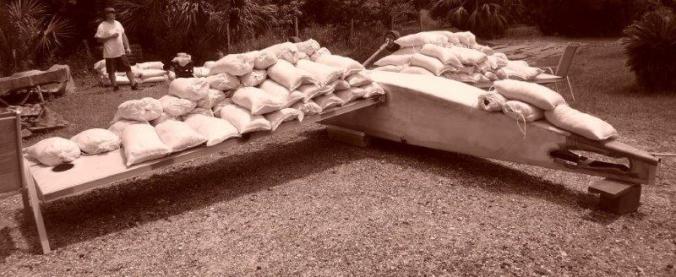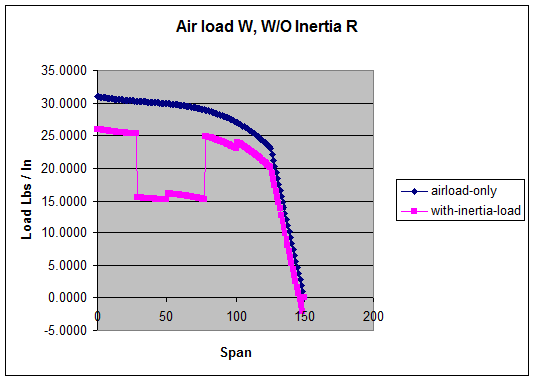6G Wing Load Proof Test @ 95ºF / Full South Florida Humidity “ETW”
Calculations say it can handle 6G’s in normal operation, the test Proves it can hold it.
Note this IS NOT destructive / ultimate testing it is purely a go-no go test for the structure. its actually required in Europe for normal kit planes
Around 140 Sand Bags (Purchased from Amazon) where hand filled with play sand (dump truck load from the local out door center), approximate rough bag calibration (fill / empty) was done via 2 25lbs weights on a balance that also doubles as the inversion stand for the plane
The inversion stand, must be tough enough to pick up the weight of the sand going thru the airframe to the carry thru box, thru this structure into the ground
Piles of sand and a calibrated bathroom scale, by the time the test came up, the bags picked up some water weight so the bag count / pattern had to be adjusted to be near equal load
“empty” upside down and ready to go, the tarps on the wings where temporary to keep the UV off the wings (no UV blocker paint yet), not much exposure but wanted to limit what i could.
The full bag setup, at this point Ken & I where ready for a long rest, the test config stayed this way for 1 hour while we caught our breath & something to eat.
Chairs on the end had masking tape on the ends to mark each G of load.
3/4 view showing the weight equivalent of a Chevy Suburban parked on the wings.
Excel graph showing air load moment diagram vs. the sand load moment diagram. the sand bag units are around ~ 50Lbs with a 11 X 21 foot print making for a more “pixalated” load distribution. the goal is to get the sand load to try to close as it can match the air load
Inertia relief is a huge item to take advantage of in Aircraft Structural design, the weight of the wing and the fuel (shown as the dip) effectively reduce the load on the wing by countering the centrifugal G forces in a pitch up or down maneuver. this is the same reason all major commercial airliners (Boeing / Airbus etc) have all their fuel in the wings. In fact in the 50’s – 70’s tip tanks where very popular to maximize the Inertia Relief effect, unfortunately it was discovered wing tips are a class 1 lightning zone essentially a lightning rod, so not the best place for fuel.







